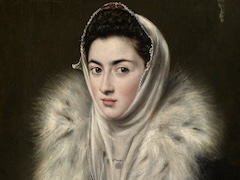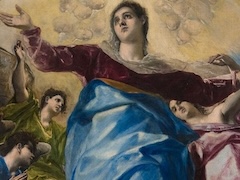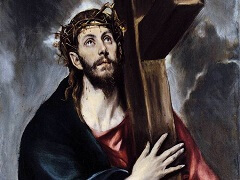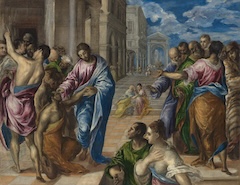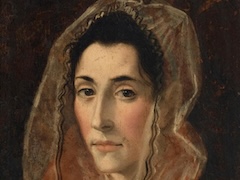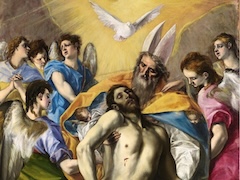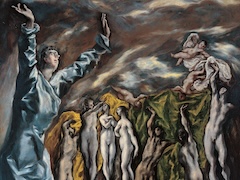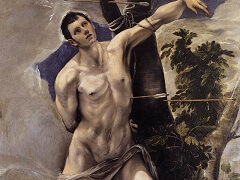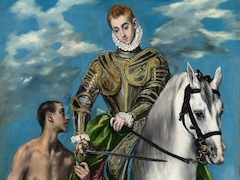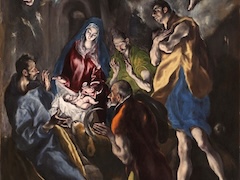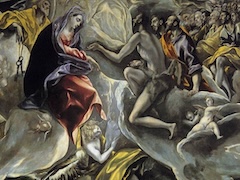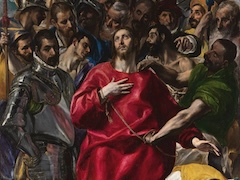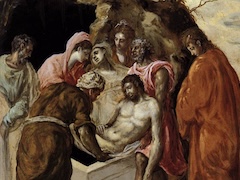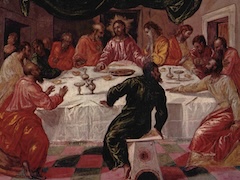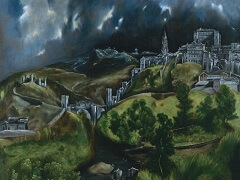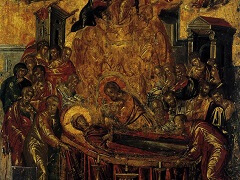Cleansing of the Temple, 1584-94 by El Greco
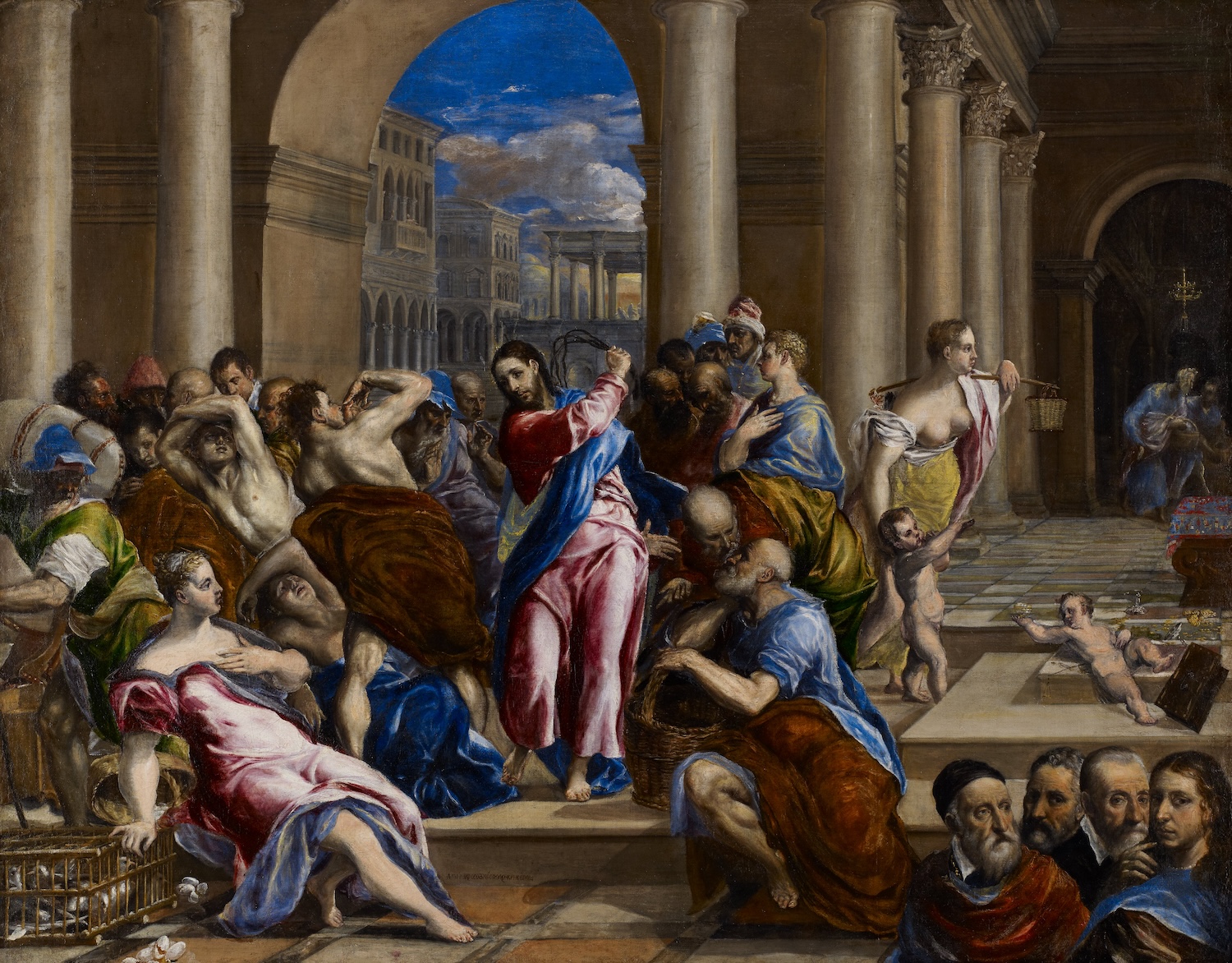
El Greco often painted the same subject several times. In this picture we have perhaps the best of his late versions of a subject which he originally painted in his still-transitional Italian period. The subject of the Saviour driving the moneychangers from the Temple is one of the rare themes that could satisfy the Protestant as well as the Catholic world of that time; for both the Reformation and Counter Reformation were officially aiming at the purification of the Christian Church.
Many elements here are still Italian-Venetian. But striking are the marked reduction of depth in the active crowd, the Byzantine ellipsoidal, bulging volume of the figure of Christ, the interrelation of sharp angles and curves in the drawing of single figures, the continuity of line from figure to figure across the picture plane.
Greco's real contribution is in the approach to the problem of constructing space with many opposed axes. Two main directions cross each other: one, stable and balanced, is parallel to the picture plane and the background wall; the other, oblique, is projected diagonally from the purposely accentuated head of the bent-over figure on the lower left of the foreground, the head bending toward us drawing us into the picture.
Whatever crudity of experiment this abstract armature of space might reveal to us, it is mitigated, harmonized, in the strict musical sense, by the a cappella vocal arrangement of colors: the now contrasted, now combined yellows, blues, greens, and grays gravitating around, and reflecting in suave and discreet halftones, the central melody of blended blue and madder - the purplish figure of Christ.

